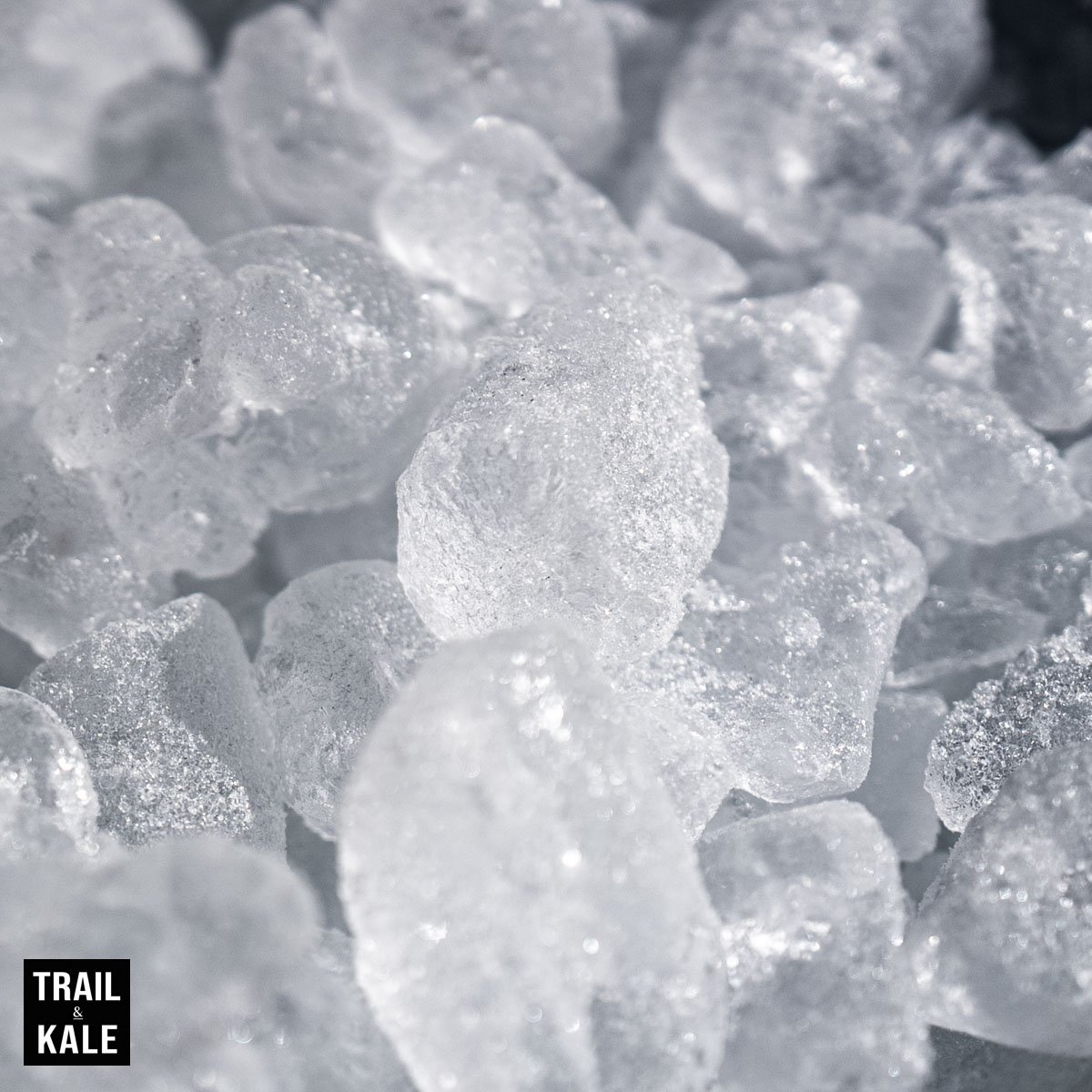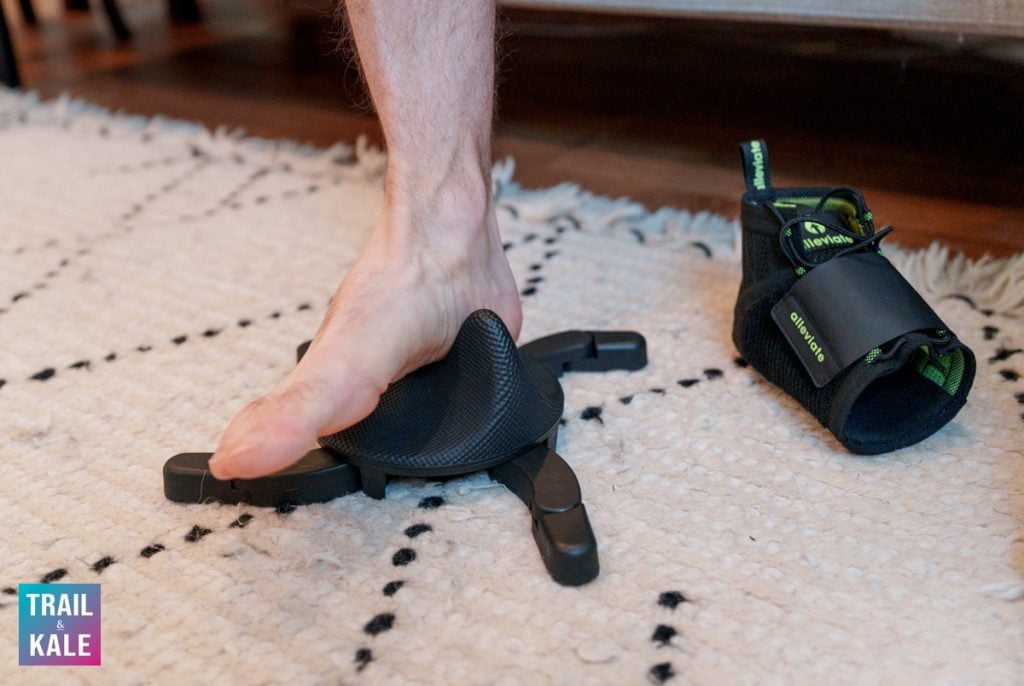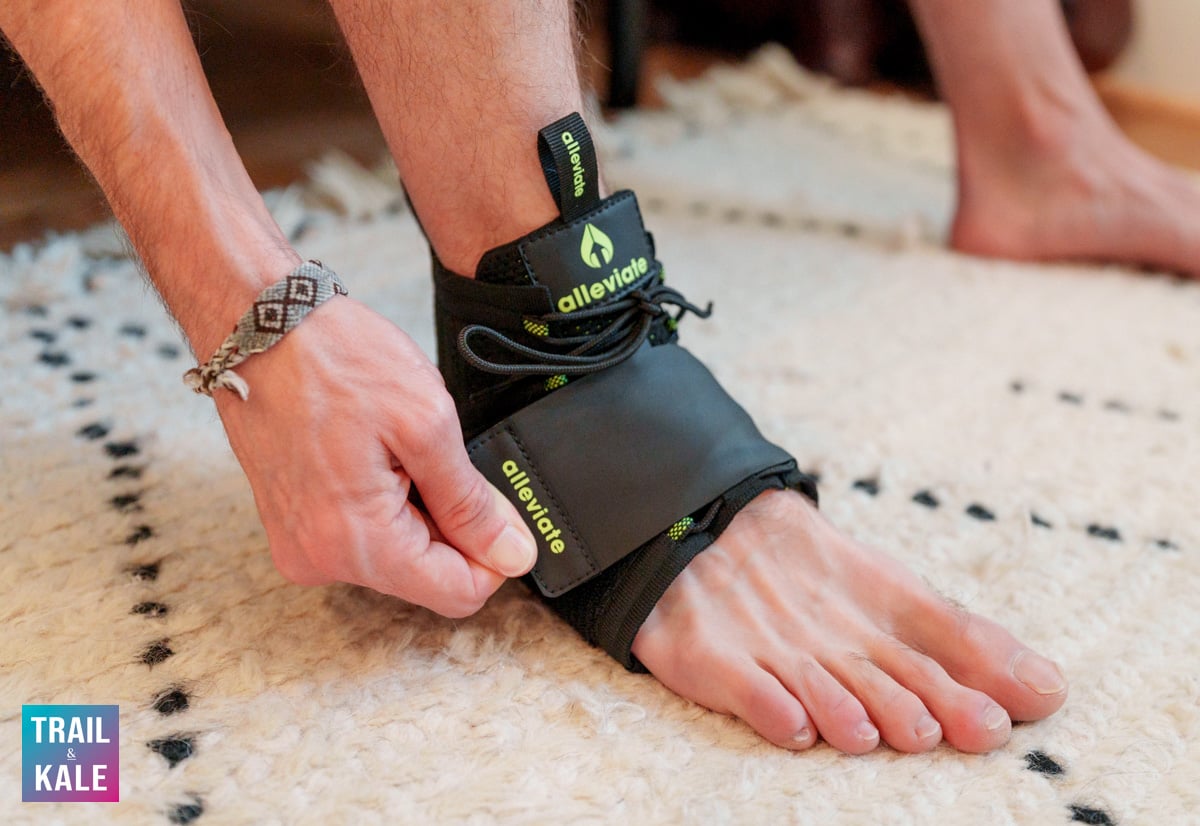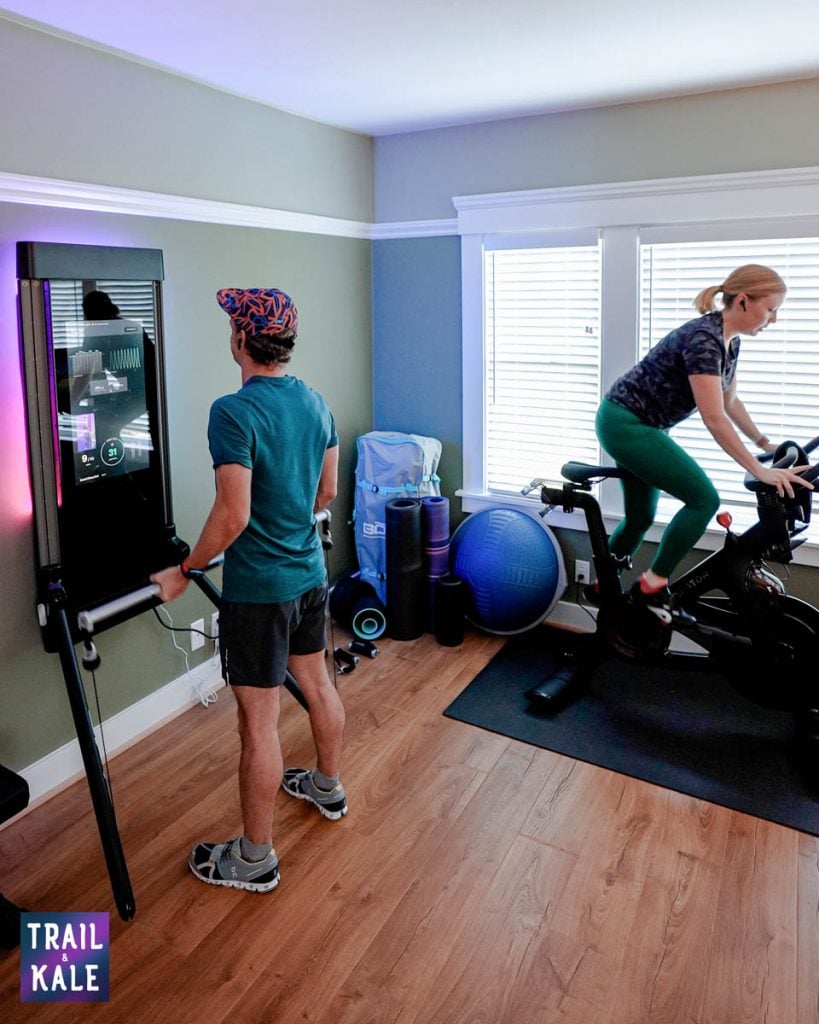If your heel or the bottom of your foot hurts, especially with a sharp or stabbing pain, you might have Plantar Fasciitis. This common foot problem is painful, but with the right care at home, most people can get better and stop it from coming back.
Plantar Fasciitis in runners is often a running overuse injury that causes inflammation of the plantar fascia, which is the thick band of tissue that runs across the bottom of your foot, connecting your heel bone to your toes.
In this post I’m sharing a simple, tried-and-proven set of steps based on my personal experience you can take to treat Plantar Fasciitis at home, to heal from this common running-related injury, and – importantly – prevent it from coming back, for good.
It’s important to note that rather than jumping to conclusions and assuming the issue you’re dealing with is Plantar Fasciitis, consider that there could be other reasons for your foot pain. This is why it is important to see a doctor in order to get properly diagnosed, or seek help from a physical therapist, before you take any steps to treat it at home.
This post is sponsored by Alleviate Therapy, a physical therapist-founded company that offers a package of essential tools to help get rid of Plantar Fasciitis foot pain by treating it at home. The system includes a slimline foot support brace, a foot massager and at-home exercise program to stretch and strengthen your body to help avoid the injury recurring once you’ve healed and got back to running once more.
Alleviate’s system is a key element of this failsafe Plantar Fasciitis recovery plan that I’ve followed with great success. Learn more about those tools in my in-depth Alleviate Therapy review.
Why are runners prone to getting Plantar Fasciitis foot pain?
Before getting into how to treat Plantar Fasciitis at home, it’s worth understanding why you may have picked up this running overuse injury in the first place.
Once you have an idea of that, then you’ll be able to make appropriate changes to your running habits to help you avoid suffering from it again in future.
There are a few reasons why we runners may be prone to getting this injury:
1. Increased weekly running mileage
If you increase your weekly running distance too quickly, this can put extra stress on the plantar fascia, as well as other parts of your feet and legs, that can contribute to the injury (as well as other possible running overuse injuries like Achilles tendinitis and shin splints).
If you’re training for a half or full marathon, for example, then ensuring you’re gradually building up your mileage no more than 10% per week should help prevent your running mileage from causing issues.
Learn more in our running training plans section, which includes a selection of free training plans for distances from 5k to 50k, that take this approach to building up mileage.
2. The surface you tend to run on
Running on hard surfaces without appropriate shoes can cause, or contribute to, a runner experiencing issues with plantar fascia pain.
Wearing old or improper running shoes that don’t support your arches or cushion your feet properly is a common culprit, but fortunately one that’s easy to put right with a new, suitably supportive and cushioned running shoe, which our running shoes buyer’s guide will help you with.
3. Your body mechanics as you run
Things like having a tight Achilles tendon (the tendon connecting your calf muscles to your heel), or issues with inadequate arch support in your running shoes can increase the risk, but the fundamental issue may even start higher up your body with your posture, glute activation and hip flexion – it’s all connected, after all!
This is one of the many reasons why improving your running form is important, as well as doing appropriate stretches before and after running. Doing so should have many other benefits including unlocking your ability to run faster!

How to treat plantar fasciitis at home
Ok let’s get into the main reason why you’re reading this post – how to actually treat plantar fasciitis at home, which is based on my personal experience with PF, so you can stop getting that annoying foot pain and get back to comfortably walking, standing and running once more.
Before you read on to learn how I have successfully treated myself to recover quickly from this very issue, remember that I’m not a doctor, nor am I a physical therapist.
So, as always, I suggest you seek out a professional before doing anything else, so that they can help you diagnose your injury and get the best treatment for your personal needs.
It will take a committed effort to not only stop getting the foot pain in the short term, but to fix the issue for good and recovery and strengthen your body so you don’t get Plantar Faciitis again once you get back to running.
For this reason, rather than treating this guide as a ‘menu’ of options to choose from, I believe it’s essential to do ALL the steps outlined below, not just picking one or two – at least, that’s how I’ve had success in avoiding a recurrence of PF in the long term.
1. Stop running and rest
As with any running-related injury, stop doing whatever is exacerbating the pain.
So, take a break from running, and avoid activities that make the pain worse. That may include walking for long periods, standing or walking barefoot on hard surfaces, and wearing high heels.
Before doing anything to treat the pain, the rest should help reduce inflammation and let your body start to heal. So, resist the urge to keep ‘testing’ it every day.
Get a pair of recovery shoes to wear around the house.
2. Apply ice
if you have some very acute pain and inflammation, it may help to apply ice (wrapped in a tea towel) to help with swelling and pain relief in the short term.

3. Foot taping or brace
Taping or wearing a brace support on your foot will help relieve the pain until it subsides and you can work on treating it.
If taping’s too much hassle and you want a proper brace, then by far the best brace I’ve come across is Alleviate’s Loft 2 brace. It lifts the arch like a suspension bridge and creates immediate relief, plus it’s slimline so it fits in most shoes, meaning you can wear it for standing and walking when that’s unavoidable.
4. Arch massage
The next step is to help your body accelerate the healing process.

The injury can result in scar tissue in your Plantar Fascia as your body starts to heal. However, this new tissue isn’t as flexible or elastic as the original fascia.
This lack of flexibility can be a problem because it means the plantar fascia can’t absorb shocks or support the arch of your foot as effectively as before.
So, to repair the scar tissue, you have a few options, including getting a professional sports massage where they use techniques such as a metal scraping tool to break up the scar tissue (ouch).
My choice was to use the Alleviate Arch Massager, which is designed to have similar results by boosting circulation and breaking up scar tissue to help you heal faster. To learn more about how to use the system, read my Alleviate Therapy review next.
If you get their complete ‘plantar fasciitis system 2‘ then you get the massager, arch braces and online exercise program bundled together (I’ll come on to the exercise part in the next step).
Alleviate’s recommendation is 2-3 minutes per session, 2 times per day, so don’t get too carried away with this step!
Excessive massage risks further stress on damaged tissue – and it goes without saying that they don’t recommend you using it if you have impaired sensation in your feet.
Below is an image of the support brace:

5. Appropriate stretches and strengthening exercises
All the classic runner’s stretches can help stretch the foot and ankle area as well as other areas such as your hip flexors and glutes.
Here are my favorite stretches for runners, the pre-run warm-up stretches are some you could do any time, you don’t have to be running afterwards.
So in steps 1-4 you’ve been dealing with the acute foot pain issue, but in this step, doing the exercises, you’re working to strengthen your body so you can recover from Plantar Fasciitis on this occasion as well as hopefully not experience it again.
Doing strengthening exercises are arguably THE most important aspect of recovering from this injury long term, so don’t skip this step!!
There are lots of resources online for helping to recover, but it can be overwhelming with conflicting information and hard to know what to do every day, right down to how long you should do an exercise for, and how many reps to do of each one.
As part of the Alleviate Therapy ‘plantar fasciitis system‘ they include access to a phased set of simple, research-backed exercises to follow that focus on building strength and stability in your feet, ankle and legs, to help with recovery long term.
The exercises are accessible via your account on Alleviate’s website which includes instructional videos to follow, and progress tracking, so you’re not guessing or working from a website printout and trying to gauge your progress, and they’re included when you get the massager and braces so it’s a bit of a no-brainer!

6. Maintain fitness with cross-training
Depending on what causes you PF foot pain, do whatever cross-training helps maintain your fitness while you take a break from running.
For me, cross training is working out on my Tonal home gym, mountain biking, or paddleboarding. For you it may be going to the gym, playing golf, swimming, you name it!
I’d say swimming is probably the lowest-risk as you’re not bearing any weight on your foot and the water makes the exercise low (or basically ‘no’) impact.
7. Get some new running shoes
When you’re trying to figure out why you may have got plantar fasciitis in the first place, take a look at your running shoes, as well as the shoes you wear every day when you’re not running.
Are they worn out? It’s probably time for a new pair.
Are they old? Even if they’re not worn out, the rubber and foam cushioning in the midsole (which you can’t necessarily see) deteriorates and becomes hard and less supportive over time.
Speaking of getting a new pair of running shoes, it’s also worth revisiting whether the running shoe brand and style you’ve been wearing is the best option for you. Another brand or style may actually be a key element in avoiding a recurrence of the injury.
Visit our best running shoes and best trail running shoes buyer’s guides for our current top shoe recommendations for different runner’s needs.
Some people may get recommended orthotics although based on my extensive experience reviewing running shoes I believe many runners are unlikely to actually ‘need’ orthotics. Instead, look at:
- getting newer, more appropriate shoes for running and walking in
- developing a commitment to stretching, strength training, improving running form and
- following an appropriate training plan when training for longer distance endurance races or increasing your weekly mileage.
8. Ease back into training
…and build up mileage gradually. Just as you would (or should) after any break from running, because a quick build-up of mileage is a recipe for many running injuries, not just plantar fasciitis!
To help gradually build up your running strength and endurance, consider following a training plan.
We have loads of great free downloadable training plans for different levels of running experience and for different distances, from 5k to 50k (including half and full marathon training plans) – check them out on our training plans page.






